ZATSU TABI: THAT'S JOURNEY
STATUS
COMPLETE
EPISODES
12
RELEASE
June 23, 2025
LENGTH
24 min
DESCRIPTION
When aspiring manga artist Chika’s storyboards get rejected, she ditches her desk for an adventure! Armed with a quirky social media poll, she sets off on a spontaneous journey of random crowdsourced destinations. From hilarious mishaps to heartwarming encounters, Chika discovers inspiration, friendship, and herself, one unpredictable stop at a time.
(Source: Crunchyroll)
Note: Based on the real life travels of mangaka Chika Suzugamori.
CAST
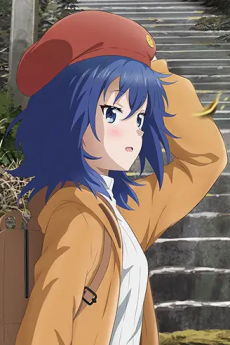
Chika Suzugamori

Hika Tsukishiro

Narrator

Hitoshi Kubota

Riri Tenkuubashi

Youko Hikasa

Koyomi Hasunuma

Sayumi Suzushiro

Yui Unoki

Sae Hiratsuka

Fuyune Koujiya

Satomi Satou

Yoshimoto-san

Yuu Kobayashi
EPISODES
Dubbed

Not available on crunchyroll
RELATED TO ZATSU TABI: THAT'S JOURNEY
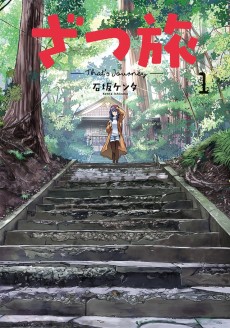 MANGA AdventureZatsu Tabi: That's Journey
MANGA AdventureZatsu Tabi: That's JourneyREVIEWS

Scheveningen
55/100A show with a solid premise that suffers from a lacklustre adaptation, leaving it feeling subpar and at times aimlessContinue on AniListZatsu Tabi is a travelogue story with a decent enough premise that unfortunately suffers from an incredibly lacklustre adaptation which exacerbated its shortcomings in themes and character. Much of the show’s issues can be surmised as all its areas having an extensive amount of telling instead of showing. This extends, somewhat ironically, to even the locations they visit which ought to be carried primarily by the visuals. The mediocre, and at times even poor animation fails to convey much of their impact and often resorts to rather clumsy dialogue to prop it up. The characters and themes cannot then effectively compensate for this since they also rely heavily on these travel scenes which much of the screen time is dedicated to. Even for scenes that focus primarily on the characters, the writing reveals them to be highly archetypal, going as far to come off as shallow or having rushed arcs. Sadly, the thematic framework that forms the last possible pillar of the show is similarly weak, with the ties backs to how travelling can influence the creative process being inconsistent or far too brief. When it is touched upon, it often feels vague or even forced given how little is known about what kind of manga is being written within the story. There are still certainly moments where some of its potential or intent shines through, but there is too much else holding it back for Zatsu Tabi to be compelling.
The issues with Zatsu Tabi can be seen right off the bat with how its opening episodes have a distinct sense of aimlessness with regards to its narrative goals. This is a result of forgoing a lengthier character introduction and launching right into the premise of travelling around Japan. It places an immense amount of pressure on how the initial travel scenes are written and directed since that is the only source of interest for the viewer. There is only a truncated opening scene to establish the status quo of Suzugamori’s life and character, which leaves little for the viewer to feel invested in since there is little basis to see how travelling changes things up or affects her character. Even the narrative framework that is meant to tie the series together of how the travels affect her writing is barely mentioned and does not get touched upon again concretely until episode 4. It leaves a distinct impression of following a character the viewer barely knows to locations that are unremarkably presented, all while then being told very bluntly what to make of the experience through various character comments or the clumsy use of a narrator. To be clear, it is not that “telling” is necessarily mediocre or unserviceable, but that it takes a significant amount of skill at writing and direction to make it shine, both of which Zatsu Tabi lacks for one reason or another. The sense of investment in the characters and endearment to them does increase as the season goes along, but that is a function of simply being more familiar with them than the show ever hitting its stride or doing something particularly compelling. The quality presented in the initial episodes ultimately becomes emblematic of the writing and directing to be expected throughout the series.
The animation and visuals, which by necessity forms a key element of the story given the premise, all range from either mediocre to even outright poor the entire length of the series. This is not helped by the extensive amount of screen time the show dedicates to travelling to these different locations and basking in their ostensible splendour without telling us much about the characters. Of course, this is the object of actually travelling in real life and ought to be reflected by the narrative. Yet it fails to sell much of this impact vicariously with there being little gravitas or charm to its depictions of these locations. Any romance there is to travelling is often undermined by the poorly composited CGI vehicles that is often jarring or even comical to look at. The locations themselves are bereft of much of their majesty with how blandly and flatly they are drawn, also not helped by the out of place models they use instead of animating much of the crowd. The show then lingers on all of this with its shots, only exacerbating the problem. It reaches the point where there is even a suspicion that many of their panoramas might simply be real life images with a sloppy filter placed over them, or at the very least containing parts lifted from them with how poorly blended in certain elements are. In particular, there are scenes of the harbour on Awashima in episode 5 and 6 that look almost like they were rushed through photoshop given how noticeable the layers are with their different levels of fidelity. Beyond just undermining the charm any of these locations should have, it often breaks the viewers suspension of disbelief. Episode 8 at the Itsukushima Shrine is the most egregious instance of this where the souvenir shops not only look like flat pictures that lack convincing depth but are also stretched out to the point where the perspective looks wrong. This is all somewhat ironic since has been pointed out that anime often over polishes otherwise mundane settings to the point where they are unrealistically charming. To see the inverse happen to even a UNESCO world heritage site cannot help but feel somewhat astounding.
Of course, it is easier said than done to capture and adequately translate the awe or wonder that many of these places can inspire in real life. Particularly with some of the more mundane locations like those within Tokyo that any adaptation might be hard pressed to elevate without it seeming over the top. However, even when presented with surreal and striking locations like Mount Osore that have many obvious features to accentuate, Zatsu Tabi puts in little effort. While the scene at Mount Osore is better realised than most with some effective cinematography, there is still a significant amount of telling being used by having Suzugamori make frequent comments instead of letting the environment do most the speaking. Although it is true that not every studio has the resources to put out spectacular animation, this lacking amount of effort and ambition can only be compared to phoning it in. The adaptation is an almost one to one recreation of the manga using the panels as effectively a blueprint for their storyboard, to the point where it could be called dogmatic instead of faithful. Though that would assume the original manga was so closely adhered to for good reasons instead of it just being the path of least effort. The extensive use of a narration or internal thoughts in a novel or manga is relatively invisible there but often ends being clunky or intrusive in an anime. Instead of considering how some of this information could be dispersed into additional dialogue, the sound design, or the animation, the exact structure given to them by the manga panels are replicated without much deviation. There has been little thought given to what alternations could be beneficial, or perhaps even necessary, to effectively translate Zatsu Tabi to animation beyond simply inserting in-between scenes to connect the various panels. There is some creativity in the directing on show in rare moments like the recap of the final episode and some one off gags, but it is clear this flexibility or effort has not been used much elsewhere. Most telling of all is that while the manga has art panels that can adequately impress upon its reader the sheer beauty of the locations that are visited, the adaptation does not even manage anything comparable.
This generally mediocre quality of animation is then made difficult to overlook because of how weak the thematic throughline of the series is. It is hard to grasp what effect the journey has on Suzugamori’s creative process because none of the locations appear inherently striking enough to take it for granted that she was inspired simply by the beauty or atmosphere. It is only in episode 4 where there is even a link back to how Suzugamori’s travels also ostensibly help with her writing through the introduction of two other mangaka characters. This initially seems like where the show will start to hit its stride with there being more interesting interactions between Suzugamori, Riri, and Fuyune in the different ways they view the traveling experience as creatives in addition to the usual character fluff. This does carry forward to the remainder of the season with Suzugamori imagining how they would interpret different locations for their stories, which gives a much needed sense of relevance to the later trips beyond being just a venue for the characters to interact at. Yet beyond these brief moments, the show still often resorts to simply telling the audience when she has some kind of creative spark. Again, episode 8 is emblematic of this, having the characters just spouting ideas about how to structure a story in a vacuum without any frame of reference, making just appear at best like truisms or jargon. There is a glimpse of this being realised in the final episode with some more concrete ideas of how the events inspire her manga, but this is far too limited, coming in only at the literally final hour with limited connection to how the other episodes have influenced this. It is understandably difficult to create a full story within the story and have it comprehensively parallel Suzugamori’s travels as a tie back. Yet, to not even know the vague premise of her manga, let alone just the genre, renders much of the framing device almost functionless since there is little the audience can grasp.
While there are also some themes to do with travelling itself, there is at best limited focus on them with how they are brought up as more one-off discussions and then seldom touched upon. The show does not delve much into Suzugamori’s initial bouts of loneliness as she travels solo, nor really examine the contrast between that and traveling with someone else. There is some set up for these ideas once the viewer knows what to look for, but they have such little emphasis placed on them that it becomes hard to distinguish it from the character fluff meant to set the atmosphere or move the trip along. Any ideas about how travelling solo might be liberating in its freedom, the frustration at not agreeing with the itinerary of a travel partner, them slowing you down, or how empty it can feel to travel without someone to share the experience with are all not dwelt or expanded upon by the narrative despite there being seeds of these ideas placed throughout the story. The presence of these ideas does seem to gradually seep into the character writing of Zatsu Tabi, with the “voice” of the series feeling more organic since Suzugamori starts to have more thoughts about her friends when travelling. This brings in some much needed characterisation and specificity to the trips instead of them being close to tourism adverts at times. Yet this feels like it is too little, too late with how this level of writing ought to have been expected from the very outset of the series instead of a voice that is only found more than halfway through.
This leaves the characters to carry the story since the situations they interact within and what they have to say are not particularly compelling. Much of the show’s charm is achieved with strong performances by the voice actors rather than how the characters are written. The interactions most of the cast have with each other are often rather surface level, perhaps as a consequence of how the themes themselves are not realised, leaving little interesting or in depth for them to discuss or muse over. The show never commits to having the trips reveal much about the characters either, with most of the cast have preexisting relationships that involve minimal conflict or disagreement. This is not to say the show needs to turn into a drama, but it leads to attempts at more heartfelt character moments like in episode 3 where it delves into Yui’s feelings about travelling with Suzugamori feeling flat. Not only are these attempts at character depth short lived with how they are set up and resolved in the same episode, they also involve a great deal of exposition about the history between characters instead of it being demonstrated over the course of more trips together. This leaves only Riri feeling interesting since she is the only character the audience learns more about gradually alongside Suzugamori. She is still a fairly archetypal character that like the rest of the cast has particular quirks played up to endear her to the audience, but the way in which this information is conveyed gradually allows the viewer to slowly form an impression of the character which heightens their interest and connection with them. Even when the show does resort to telling the viewer about Riri, it feels inherently more interesting since this is information that is also new to Suzugamori and only told to her after we see the developments in their relationship that have warranted it. Unfortunately, a single interesting character cannot make up for the general writing quality of the show that leaves much of their actions and relationships feeling somewhat shallow; or at least lacking that spark that forms the narrative core that similar anime rely on to foster a deep connection to the characters.
Overall, the adaptation of Zatsu Tabi can only be characterized as lacklustre, both in quality and ambition. There is an extensive amount of outright telling the audience things in a very blunt and ungraceful manner, combined with mediocre to poor artwork that follows the source material panel for panel. It can even reach the point where it feels like a glorified tourism advert. To be fair, the issues of the show do not stem solely from subpar effort in its adaptation and likely also come from the fundamental issues of how the Zatsu Tabi manga was written. Maybe all this can still be smoothed over for a viewer who finds the characters comforting or endearing through their mannerism and voice acting alone, but that cannot be the primary criteria for good story. Even then, if that were to be Zatsu Tabi’s only saving grace and main point of attraction, it speaks to how little direction or purpose the story has as a whole has since it is not a particularly interesting character study either. With all that said, it is hard to give this more than a 5.5 out of 10. That might be a little generous given the litany of shortcomings listed, but there were moments where still moments, particularly in scenes between Suzugamori and Riri where they talked more about their creative process, where glimpses of the show’s potential and intentions shined through. It is a pity that what was a solid premise was not better realised and stuck too literally to its cute girls doing cute things label without the underlying substance that makes those kinds of anime standout.

KawaragiMomoka
100/100An amazing anime to watch while relaxing and eating foodContinue on AniListZatsuTabi might suit some people taste but it's well suited for me. As I am from Japan, I got to see places I went to in real life. From this anime there was two place I actually went in real life. First is Onomichi of Honshu island in Hiroshima Prefecture, Japan at 2023 and Fushimi Inari Shrine of Shinto shrine in Kyoto, Japan at 2019. You won't expect much from this anime. Just take a food, rest and watch this anime. You automatically enjoy it especially after a long day work or school.
1. Animation
The animation is actually pretty good. Though this anime doesn't show much of movement of the characters, it was still good with less bad animation in it. That simple yet perfect animation is the one that helpful thing if you watch this anime as a resting or enjoyable anime instead of watching it like doing a work. I am glad they didn't mess up with the animation. So for the animation I give (8/10)
2. Story
The story itself is pretty simple as it shows a mangaka named Chika going on her journey because her manga is not getting published and rejected by her editor. As she goes to the places of japan, she gets some idea but also get to enjoy that place while in it. Especially when she goes to the journey with her friends, it makes the story even more interesting. Like what happened to Koyomi at episode 10 was heartwarming since Koyomi decided to become a teacher or this last episode when Fuyune and Riri make up for their fights and became friends again. Aside from that, there is also some funny moments too. Like how a bad thing always happens to Chika while she is on her journey but that what makes it even more thrilling. Though this anime is mostly about "Knowledge" as you learn my motherland Japan's places and it's history. So for the story I give. (9/10)
3. Background
This anime is made just for the background. When you see each episode, the background becomes more and more realistic. This is to give us the feeling of going on a journey alongside Chika. Since they also talking about the places in japan and explaining it, the background was really important. Like you can see how detailed the shrine, city, roads and other places was. This gave us the perfect vibe of looking at the places of japan and easily understanding the explanation. So for the background I give (10/10)
4. Characters
The characters are well done if you ask me. Each have their own story to share while also going on a journey alongside with Chika. Like how Fuyune can immediately see an imagination after getting some ideas and looks childish, she can get cool too. Riri always might be drunk and love sake but she can get cool sometimes. Koyomi might look cool but it showed even she have some problems and trying to tackle it. Yui is look up to Chika and really doing her best to get into the university but also love castle and rocks. Each characters have their own vibrant story for us to enjoy them. So for the characters I give (9/10)
I am really hoping to see a season 2 and as for now goodbye Chika!
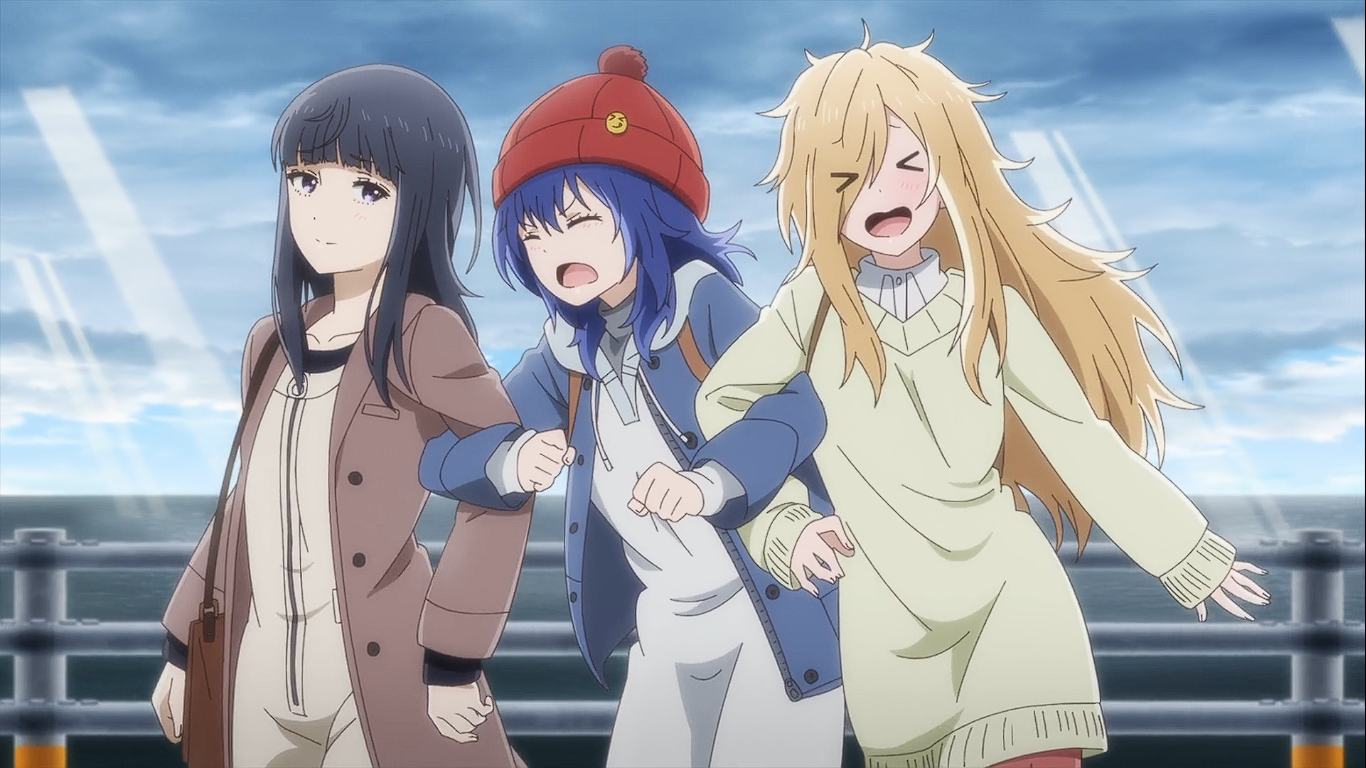

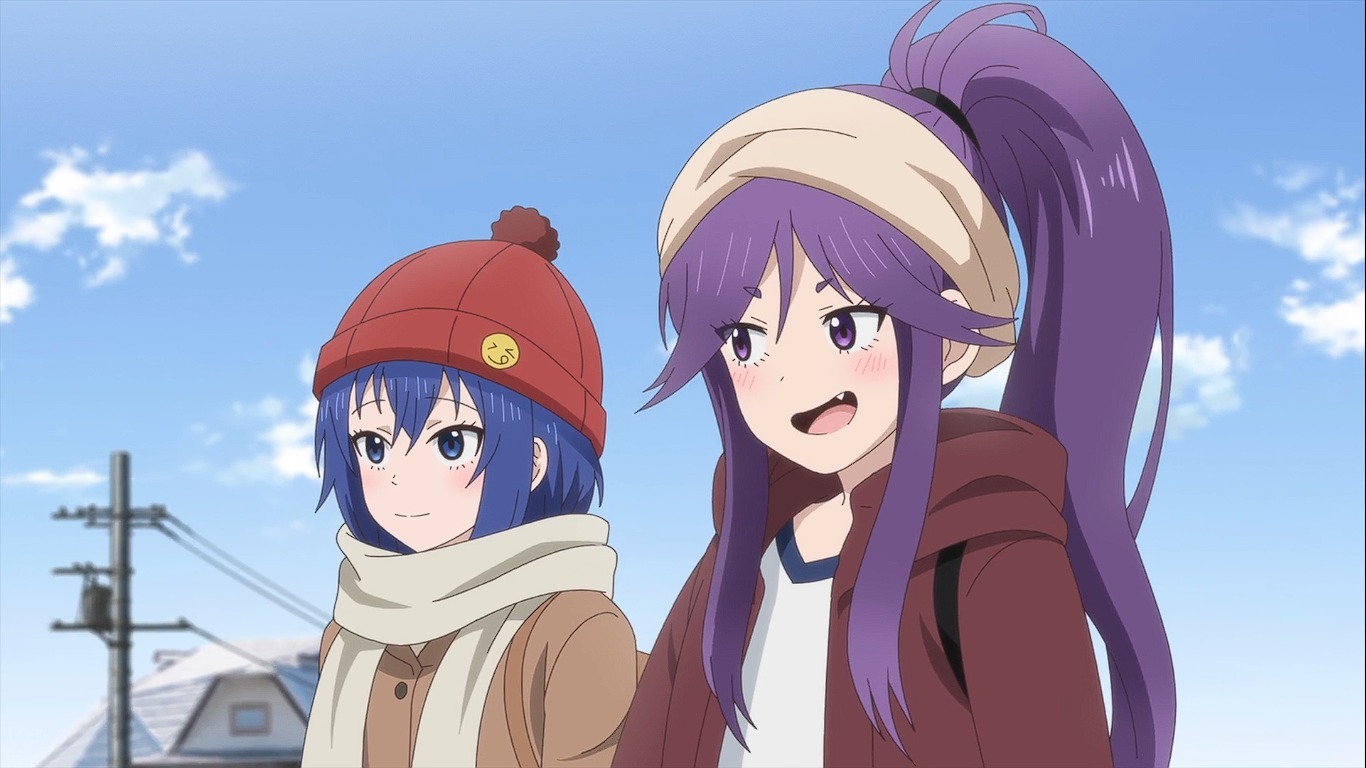

Niijishima
100/100Sometimes all it needs is the first step for a spontaneous decision, so you can truly find your way in this worldContinue on AniListAfter watching the first episode of ZatsuTabi – That’s Journey, I initially thought, this would be a Laid-Back Camp clone. The wintery atmosphere, the blue-haired protagonist, sightseeing, mouthwatering meals, onsen and a calm narrator explaining random facts. It all screamed Laid-Back Camp. But what started as a familiar comfort anime ended up becoming so much more than I ever expected.
At the heart of this series is Chika Suzugamori, a young student just at the start of her career as a mangaka and already stuck. Her numerous story pitches keep getting rejected. But rather than wallow in frustration, she makes a spontaneous decision: she sets off on a journey. With no clear destination and only a Twitter poll to guide her direction, Chika heads into unknown terrain. It’s striking how she never lets setbacks defeat her. She’s scared, uncertain, sometimes regretful but she keeps moving forward. The 1000 steps she climbs in episode one become a powerful symbol of her path. She struggles, but pushes through. And when she reaches the top, no breathtaking view waiting, she laughs. Because she realizes: the goal isn’t the reward. It’s the journey itself, the one she walked despite everything. It may sound like kitschy, but ZatsuTabi sells that message with such sincerity and warmth that it feels completely earned.
A perfect example is episode 8, where Chika desperately searches for inspiration during her next trip, only to find it not in the landmarks but in the emotions she experiences along the way. The bliss of an onsen, the frustration of a canceled train, the joy of local cuisine, the anxiety of finding no room for the night, the excitement of endless stairs. Chika learns to feel these moments and that gives her the strength to move forward.
And that’s a central strength of ZatsuTabi: the show embraces spontaneity as a vital part of life, its chaos, its beauty. Chika’s choice to travel was a spur-of-the-moment decision and so were the destinations. And from that randomness comes everything: the joy of discovering unknown places, the disappointment of missed connections, closed shops, the wrong bus. Towards the end, Chika craves these moments like a masochist who fell in love with the mess. But that’s the charm: daring to take that first step into uncertainty, just like Chika did. We learn she’s always been a determined person, someone who doesn’t want to live with regrets and that trait pushes her onward. She overcomes setbacks and stands tall, smiling one of the most genuine smiles I’ve ever seen. And what makes her so lovable isn’t just her resolve, but that she never loses her inner child. She jokes around with her friends, devours food with joy, and soaks in more hot springs than anyone would. Even as she grows up, her playful side brings warmth and levity to the series.
Another reason Chika works so well as a protagonist is her realization of how different it is to travel alone versus with friends. When she’s by herself, she reflects deeply on her thoughts and emotions, evaluating her journey. With friends, she expands her horizons, developing new interests, like history and takes joy in sharing beautiful moments with the people she cares about. Both types of trips help her grow and find herself. And that hits especially close for me, because my favorite character of all time from a different anime reached the same realization and that gave me strength.
But what would Laurel be without Hardy? Batman without Robin? Chika without her friends? It’s not just our blue-haired protagonist who shines in ZatsuTabi, the whole cast brings healthy and heartwarming variety to every episode.
First there’s Koyomi, Chika’s best friend. Every trip with her promised joy, excitement and fun. Watching them goof around together is not only adorable, it shows how precious friendship can be. Yui, Chika’s Kohai, adds a mentor–student dynamic that brings Chika into a more responsible role as she cares for her junior. With Fuyune and Riri, the roles flip entirely. Chika becomes the student, learning from her senpai how to be a better mangaka.
What’s even better: the side characters grow as well. They’re not just there to support Chika, they have their own fears and dreams. We see that especially as their dynamics shift. In episode 10, for the first time, we see a vulnerable Koyomi, scared of being left behind as her friends start moving forward. That gives rise to a beautiful moment where Chika simply is there for her and together they let the magic of the journey inspire them. Yui, who worries she’ll never be able to stand on equal foot with Chika, learns to accept her role and is rewarded with a heartfelt invitation for another trip at the end of episode 3. Fuyune, who initially supported Chika alongside Yui in episode 8, is later supported by Chika in episodes 11 and 12 as she sorts her emotions and shows her caring side.
Then there’s Riri, someone Chika (understandably) first resented for her over-the-top drinking habits. But that resentment turns into respect when Riri proves she can be serious when it counts. Whether it’s abstaining from alcohol while traveling with the underage Chika in episode 7, jumping in front of a child who suddenly runs into the street or simply discussing manga ideas with professionalism, Riri earns her place. She even shows a romantic side in episode 12, taking a seven-hour train ride just to reconcile with Fuyune. Watching the cast evolve beyond their “supporting” roles was a welcome surprise. Some characters get more depth than others, sure, but in the end, every one of them brings something meaningful to both Chika and ZatsuTabi.
That said, I do have one criticism. The show often doesn’t give enough breathing room between trips. It frequently jumps from one to the next without pause. That makes it harder to let the previous journey sink in. This is especially noticeable in episode 5, when a beautiful solo trip ends, only to immediately cut to Chika’s next journey with Koyomi. As much as I love Koyomi, going from such a quiet, introspective moment to a lively duo doesn’t give the solitude time to resonate. I would’ve appreciated more moments of everyday life between trips, to really feel the impact of each journey. Still, I forgive it because in exchange, we got an incredibly emotional finale that tied ZatsuTabi together perfectly.
ZatsuTabi thrives not only through its characters but also through the immersion of its settings. The backgrounds are stunning, drawing you into every location as if you were really there. I especially loved how the environments were used to symbolize the characters. The 1000 steps in episode 1 represent Chika’s first leap. Steps appear again in episode 10, when Koyomi catches a falling child as she and Chika climb, a hint at her dream of becoming a teacher. In episode 9, there are no steps but instead, the rising and setting sun at New Year’s, marking the end of one chapter in Chika’s life and the beginning of another.
And then there’s the gentle soundtrack and art style, which together create a calm, thoughtful atmosphere without ever overdramatizing anything. Take Chika’s moment of realization in episode 8 when she climbs the stairs with her friends. There’s no big fanfare, no dramatic speech. Just a quiet “Wow.” Or Koyomi’s fears in episode 10, portrayed not as a life-or-death crisis, but as the quiet anxiety of a young adult still figuring herself out. ZatsuTabi is quiet and unhurried. It shows us how to cherish life’s small moments whether it’s secretly planning a trip to surprise your friends or taking a silly argument way too seriously because the bond means that much. Above all, Chika reminds us again and again that something as simple as a bath or a good meal can be incredibly special.
ZatsuTabi – That’s Journey is not just a Yuru Camp clone. Its older cast and more mature themes give it a different, more grounded tone. But what it excels at most is showing how Chika and her friends find their respective paths, step by step, quietly and earnestly. And if you ask me, this anime was a beautiful source of inspiration that proudly proclaims:
That’s Journey.
SIMILAR ANIMES YOU MAY LIKE
 ANIME ComedyYuru Camp△
ANIME ComedyYuru Camp△ ANIME AdventureYama no Susume: Next Summit
ANIME AdventureYama no Susume: Next Summit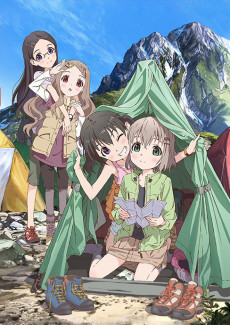 TV SHORT AdventureYama no Susume
TV SHORT AdventureYama no Susume ANIME AdventureSora yori mo Tooi Basho
ANIME AdventureSora yori mo Tooi Basho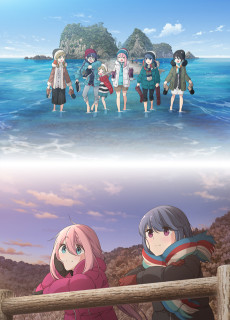 ANIME ComedyYuru Camp△ SEASON 2
ANIME ComedyYuru Camp△ SEASON 2 ONA ComedyThermae Romae Novae
ONA ComedyThermae Romae Novae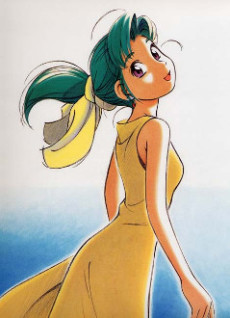 OVA Sci-FiYokohama Kaidashi Kikou
OVA Sci-FiYokohama Kaidashi Kikou
SCORE
- (3.4/5)
TRAILER
MORE INFO
Ended inJune 23, 2025
Main Studio Makaria
Trending Level 1
Favorited by 189 Users
Hashtag #ざつ旅 #ZATSUTABI





